Sand Perch

Species Details
Diplectrum Formosum
Serranidae
Perciformes
Inshore, Flats, Reefs, Wrecks
1 - 2 lbs.
4" - 11"
Sand Perch (Diplectrum formosum) Fish Description
Also known as sand sea bass, sandfish, and squirrelfish, the Sand Perch Sand is an inshore fish species that are highly territorial. It is a member of the sea bass or serranidae family.
The Sand Perch is easily confused with the dwarf sand perch. To distinguish them, one must look at the spines. The dwarf sand perch has spines diverging from a single-center, while the spines radiate from two areas in the Sand Perch.
Sand Perches have elongated bodies that are flattened towards the head. They resemble wrasse in that they both have long dorsal and anal fins which may possess a few spines. Both fishes also have enlarged lips that appear to curl back; they have canine teeth in front of their jaws.
Sand Perches are brown on top and white underneath. They are attractive with their dark vertical bars, seven irregular horizontal lines colored blue, and a midline stripe culminating in a dark spot at the tail. Sand Perches possess a continuous dorsal fin, a concave caudal fin, and large eyes. All their fins are dusky, but the caudal fin has light orange blotches, whereas the dorsal fin has blue and yellow lines.
Sand Perch Diet and Size
Sand Perches love to eat small fishes (small sea bass, sea robins, blennies, flatfishes, filefish, and gobies).and crustaceans (crabs, shrimps, and amphipods) found in shallow bays or reefs and rocky areas.
Sand Perches fall prey to groupers, snappers, red porgy, bull sharks, red drum, and sea birds.
Sand Perches grow up to 12 inches in length; more commonly, they measure 5 up to 9 inches. They are a favorite panfish despite being quite small. They mature at around 2 to 3 years of age, and reach up to 6 to 7 years.
Interesting Facts About the Sand Perch
- Since Sand Perches are territorial, they do not group like other schools of fish; they are, instead, rather isolated.
- The Sand Perch can change the color of their stripe and bar patterns very quickly from pale to dark.
- Taxonomist Carl Linnaeus originally described the Sand Perch as Perca formosa; it was later changed to its current and valid scientific name, D. formosum.
- Sand Perches are considered a ‘simultaneous hermaphrodite’. Their gonad contains both male and female reproductive tissues which are only divided by a thin membrane. Still, they cannot self-fertilize.
Sand Perch — Fishing Techniques
Anglers can use line and hook with shrimp or cut squid as bait to lure and capture Sand Perches. They are often caught near the shoreline, small boats, and bridges. Shrimp trawlers also usually accidentally catch this fish. Anglers must take caution when handling Sand Perches due to their sharp gill plates. They can also be caught with a cast net. It is best to fish for them on rocky bottoms.
Sand Perch Habitat and Distribution
Sand Perches normally occur over rubble or sand substrates in shallow seas; they are a benthic species of fish who love warm, inshore waters. They inhabit shallow bays and seagrass beds as deep as 262 feet. Sometimes, they are also associated with wrecks and deep channels. Sand Perches tend to live in holes in the sandy bottom as shelter to hide in when predators come.





